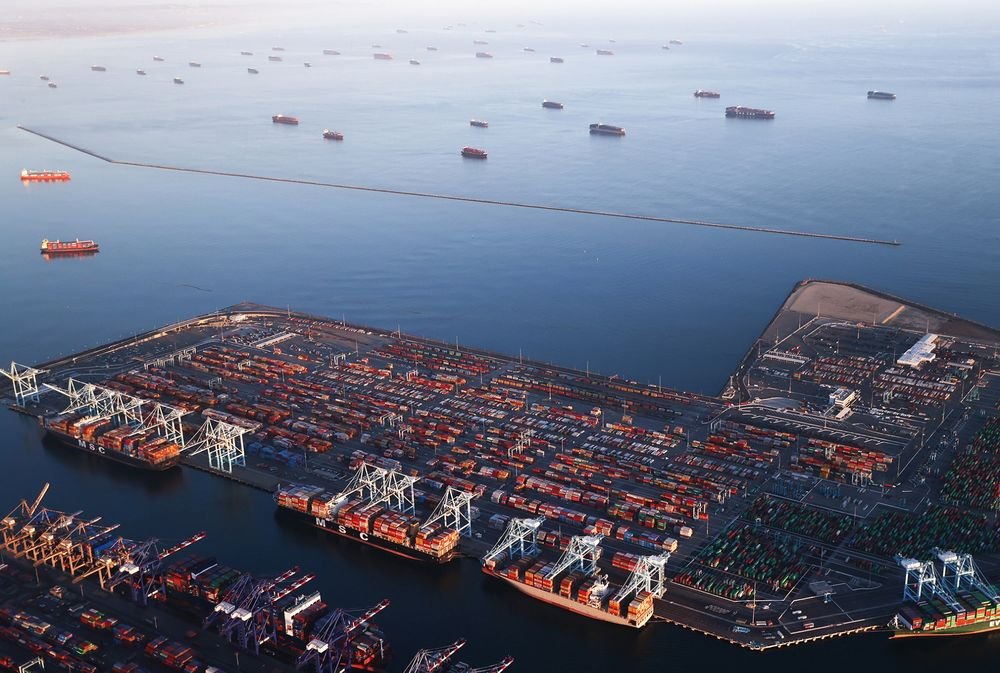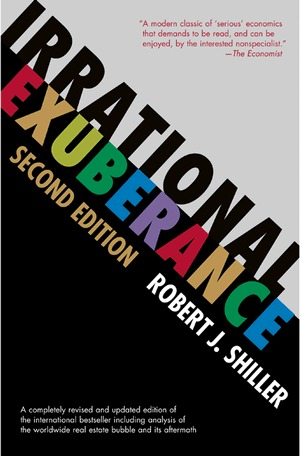
The Baltic Dry Index (BDI) has gone down 52% since its early October peak (largest peak since '08)
Last time it went down so quickly was just before the '08 crisis, announcing the collapse of international trade.
But in today's context, is this good news or bad news?
👇🧵
Last time it went down so quickly was just before the '08 crisis, announcing the collapse of international trade.
But in today's context, is this good news or bad news?
👇🧵

1/ The BDI, listed on the London-based Baltic Exchange, measures the costs of transporting various important raw materials by sea (e.g. coal, iron ore, grain).
It takes into account shipping routes, timing of delivery, ship capacity, and is a widely used benchmark in shipping.
It takes into account shipping routes, timing of delivery, ship capacity, and is a widely used benchmark in shipping.
2/ Generally, it is also considered to be a very important leading economic indicator:
When it goes 📈 , it signals high demand for shipping and hence booming international trade. 👍
When it goes 📉 it signals a decline of demand, and an upcoming economic crisis. 👎
When it goes 📈 , it signals high demand for shipping and hence booming international trade. 👍
When it goes 📉 it signals a decline of demand, and an upcoming economic crisis. 👎
3/ At least this is what it did back in 2008, when it went down 66% from April to July, falling even further after the banking panic.
International trade dropped 20%, close to the levels of the Great Depression. No wonder the crisis was deep and painful.
International trade dropped 20%, close to the levels of the Great Depression. No wonder the crisis was deep and painful.

4/ But can we expect the same this time?
Let’s first understand the logic of int’l shipping.
You only use large ships to transport stuff if there is a lot of stuff to move. Hiring a large ship is costly and is generally a big commitment on the side of the buyer.
Let’s first understand the logic of int’l shipping.
You only use large ships to transport stuff if there is a lot of stuff to move. Hiring a large ship is costly and is generally a big commitment on the side of the buyer.
5/ This makes the supply of large cargo ships very *inelastic* as it takes time and effort to build and use a ship (you don’t use it for any short-term projects and there is really limited place for short-term speculation).
6/ This also means that marginal increases in demand for ships will push the index up very rapidly, and marginal decreases in demand will push it down.
E.g.
500 ships competing for 510 cargos – rates go 📈
500 ships competing for 490 cargos – rates go 📉.
E.g.
500 ships competing for 510 cargos – rates go 📈
500 ships competing for 490 cargos – rates go 📉.
7/ What we had thus far, in the wake of the post-COVID surge in demand (responsible for the bulk of #inflation we’re seeing), is more than a marginal increase in demand for ships to move a lot of stuff, which has been increasing the index since January 2021. 

8/ The index reached a peak in early October, exacerbated by the #supplychain crisis.
And then it started going down. Why?
Marginal decline in demand. The cargos being shipped finally declined, and now there’s a bit too many ships chasing all this cargo.
And then it started going down. Why?
Marginal decline in demand. The cargos being shipped finally declined, and now there’s a bit too many ships chasing all this cargo.

9/ The BDI is a great leading economic indicator precisely because it signals demand for key raw materials that get used for production of many goods in sensitive industries: construction, energy, food. A decline in demand for raw materials signals a decline in demand in general.
10/ But not in the post-COVID context. In the post-COVID context this indicator going down after a high peak can actually be a good thing signaling an ease of the supply chain crisis.
In other words, we might just have a #Christmas after all!
In other words, we might just have a #Christmas after all!
11/ OR … it could all again be due to China. Its latest policy targeted domestic steel producers cutting their export subsidies, which is already causing a contraction in demand for steel (raw materials for steel are a big part of the BDI). This might be driving down the BDI.
12/ But even that would not warrant a 50% decline in the index.
So we’ll remain cautiously optimistic about a slight ease of the #supplychain crisis.
Hope you’ve enjoyed this, and thanks for reading 😊
Don’t forget to subscribe to the newsletter: oraclum.substack.com
So we’ll remain cautiously optimistic about a slight ease of the #supplychain crisis.
Hope you’ve enjoyed this, and thanks for reading 😊
Don’t forget to subscribe to the newsletter: oraclum.substack.com
• • •
Missing some Tweet in this thread? You can try to
force a refresh










